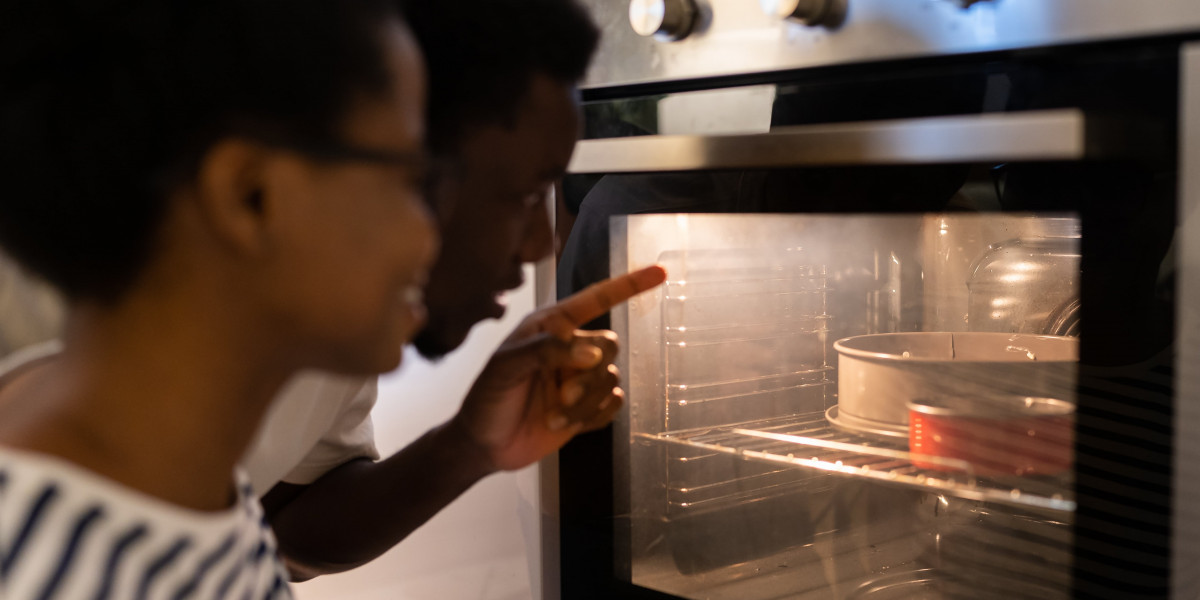
The Ultimate Guide to Kitchen Built-In Ovens: What You Need to Know
When it concerns modern kitchen areas, the built-in oven is more than just a home appliance; it is a statement of design, effectiveness, and performance. Built-in ovens are developed to integrate seamlessly into cabinets, providing a sleek appearance that enhances the general design of the kitchen. This article checks out the different types, benefits, and considerations of kitchen built-in ovens, and supplies insights to assist you make an educated acquiring decision.
Tabulation
- What is a Built-In Oven?
- Kinds Of Built-In Ovens
- 2.1 Single Ovens
- 2.2 Double Ovens
- 2.3 Steam Ovens
- 2.4 Wall Ovens
- Advantages of Built-in built oven Ovens
- Key Features to Look For
- Setup Considerations
- Regularly Asked Questions
- Conclusion
1. What is a Built-In Oven?
A built-in oven is an oven created to be installed within kitchen cabinets instead of as a freestanding unit. This style permits higher visual flexibility while making the most of readily available kitchen space. Built-in ovens been available in various sizes and configurations, accommodating diverse cooking requirements and kitchen designs.

2. Kinds Of Built-In Ovens
Understanding the different kinds of built-in ovens can assist customers choose the right one for their kitchen setups and cooking styles.
2.1 Single Ovens
Single ovens are compact and created to fit within standard cabinet widths. These ovens typically supply enough area for daily cooking needs, such as baking or roasting. They come in various electric or gas designs and are frequently user-friendly with uncomplicated controls.
2.2 Double Ovens
For individuals who regularly host large events or enjoy cooking multi-course meals, double ovens can be a lifesaver. These systems consist of two different oven compartments and deal increased cooking capacity, permitting for simultaneous baking or roasting at various temperatures.
2.3 Steam Ovens
Steam ovens utilize steam to Samsung 60cm Dual Cook Flex™ Electric Oven food, which helps maintain moisture and nutrients. These ovens are progressively popular amongst health-conscious people and gourmet cooks. Steam ovens can be built-in together with conventional ovens for a flexible kitchen setup.
2.4 Wall Ovens
Wall ovens are developed to be installed within a wall rather than under counter tops. They provide convenient gain access to and can be integrated range cooker with other wall-mounted kitchen appliances. Wall ovens might be readily available as single or double systems.
3. Benefits of Built-In Ovens
Selecting a built-in oven includes numerous advantages:
- Space Efficiency: Built-in ovens can be tucked into kitchen cabinetry, maximizing valuable kitchen area.
- Visual Appeal: They provide a cleaner, more modern appearance than standard freestanding ovens.
- Range of Designs: Built-in ovens are available in numerous surfaces, including stainless steel, black, and white, enabling integration with various kitchen designs.
- Improved Functionality: Many built-in ovens come equipped with innovative features such as self-cleaning modes, touch screens, and convection technology.
4. Key Features to Look For
When selecting a built-in oven, consider the following features to improve cooking functionality:
- Temperature Range: A more comprehensive temperature range permits for higher flexibility in cooking numerous dishes.
- Self-Cleaning Options: Look for models that provide self-cleaning abilities to save effort and time on upkeep.
- Convection Cooking: Convection ovens distribute air to cook food equally and rapidly.
- Wi-Fi Connectivity: Some contemporary built-in ovens featured Wi-Fi capability, enabling users to control settings or pre-heat the oven from another location.
- Security Features: Check for features like automatic shut-off, kid locks, and cooling systems to make sure maximum safety.
5. Installation Considerations
Before purchasing a built-in oven, particular installation elements need to be addressed:
- Size and Dimensions: Ensure the picked oven fits the designated area. Measure the height, width, and depth of the intended setup location.
- Ventilation: Gas ovens require appropriate ventilation to make sure security. Consult an expert if necessary.
- Electrical Requirements: Check the electrical requirements of the picked system to guarantee compatibility with existing outlets.
- Expert Installation: If you're not experienced in appliance installation, it might be a good idea to seek expert help to make sure correct fitting and compliance with local codes.
6. Regularly Asked Questions
Q1: How do built-in ovens differ from freestanding ovens?A: Built-in ovens are set up in kitchen cabinetry for a smooth appearance, while freestanding ovens stand alone and do not require built-in setup.
Q2: Can you set up a built-in oven yourself?A: While some individuals with experience might select to install an oven themselves, it is generally recommended to work with an expert to make sure electric or gas connections are securely set up. Q3: Are built-in ovens energy-efficient? A: Many built-in ovens feature energy-saving innovation and are often more effective compared to older models. Always inspect energy rankings before buying. Q4: Do built-in ovens need unique maintenance?A: Regular maintenance includes keeping
the interior clean and looking for any wear and tear. Self-cleaning best fit their cooking design and style choices. Whether a seasoned chef or a home cook, the advantages of going with a built-in oven are clear. By considering the details described in this guide, individuals can make educated choices that will lead to years of cooking enjoyment. Additional Resources For more details on kitchen appliances, consider having a look at the following resources: Consumer Reports: Product reviews and buying guides. Energy Star: Energy-efficient appliance recommendations. Home Improvement Stores: Local experts can offer additional insights and guidance. Starting a kitchen remodelling or upgrade can be
models can simplify this task considerably. Q5: What is the typical life-span of a built-in oven?A: The average life-span of a built-in oven is typically in between 10 to 15 years, depending on usage and upkeep practices. 7. Conclusion Purchasing a built-in oven can boost both the performance and visual appeals of your kitchen. With numerous types and functions readily available, customerscan choose designs that






